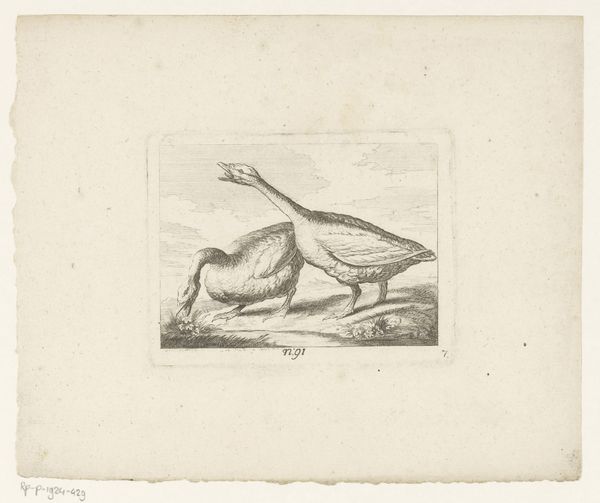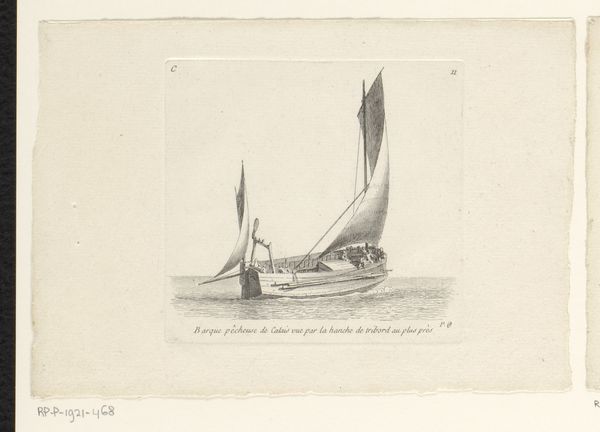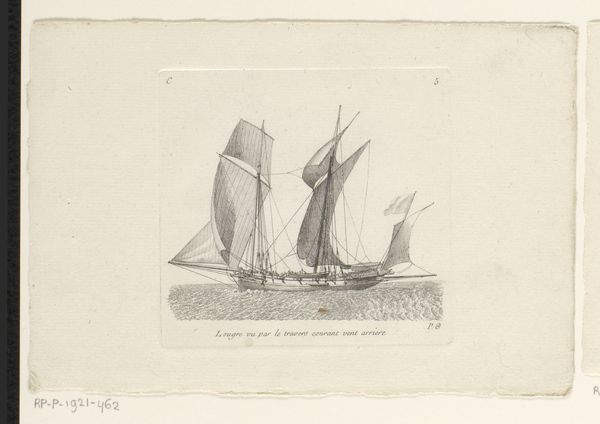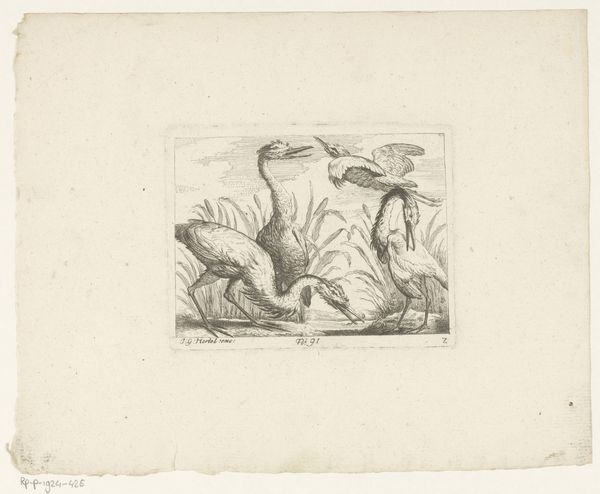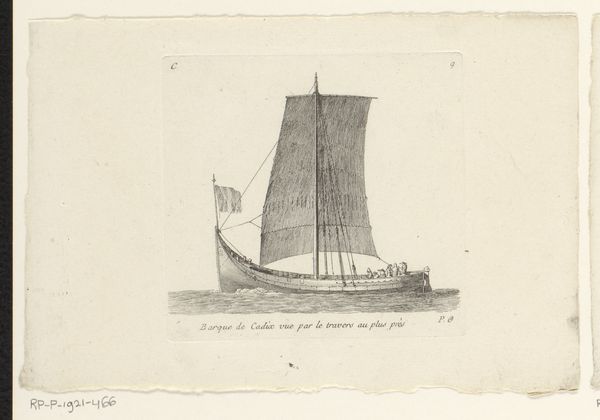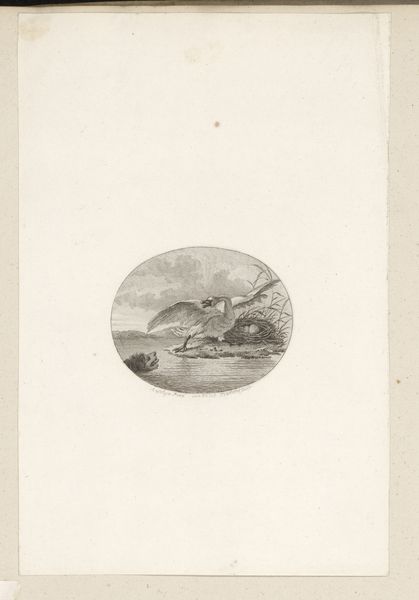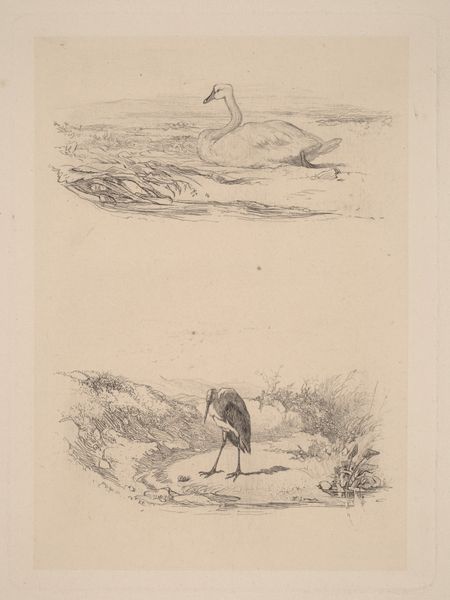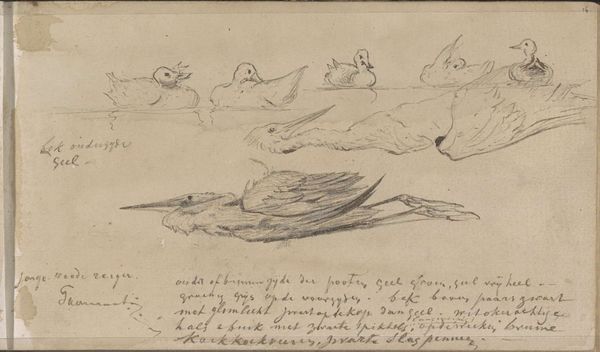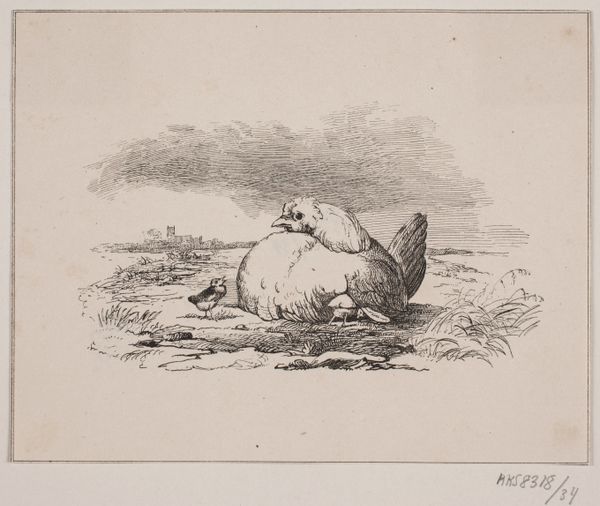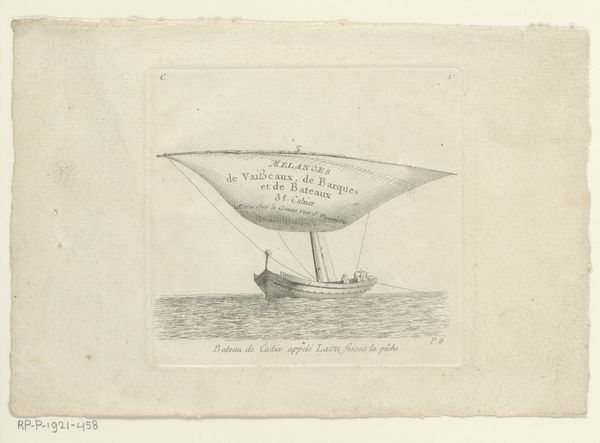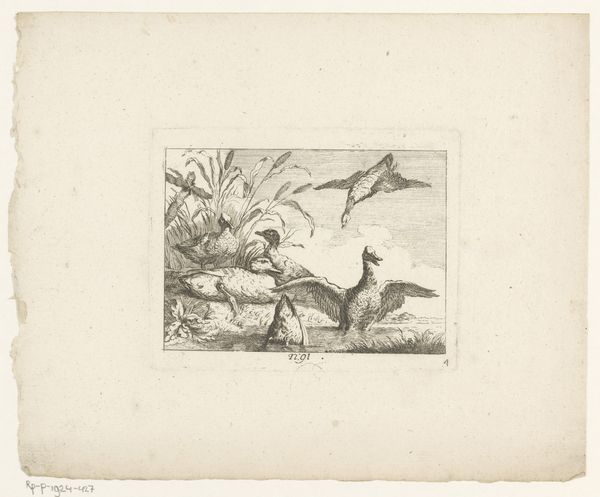
drawing, print, ink, engraving
#
drawing
# print
#
landscape
#
ink
#
engraving
Dimensions: height 113 mm, width 119 mm
Copyright: Rijks Museum: Open Domain
Curator: Let's consider this print by Pierre Ozanne, titled "Vissersboot uit Lissabon," depicting a fishing boat off the coast of Lisbon. The piece is dated somewhere between 1747 and 1813, created using ink engraving techniques. Editor: My immediate reaction is serenity, a tranquil depiction of labor. There’s a quiet hum to this scene, created with a deliberate economy of line. I notice the subtle variations in hatching that give volume to the sails and a sense of movement to the water. Curator: Yes, and I'm struck by how this image might tap into Portugal's rich seafaring history and symbolic weight associated with maritime exploration and fishing culture. The boat isn't merely a vessel, it’s a symbol of enterprise, connecting Lisbon's people to the ocean. Editor: It's interesting to consider the materials here—ink and paper—and the process of engraving itself. This wasn’t a quick sketch. Each line was painstakingly carved into a metal plate, requiring skill and time. That act of labor in replicating labor connects us directly to Ozanne's process and also, more deeply, to the fishermen and the whole industry of paper being produced so these images could be consumed, traded and enjoyed. Curator: Precisely. And consider how the sails fill almost the entire frame, billowing. One almost feels the strength of that wind and, symbolically, the strength and reliance the Portuguese put in natural elements to survive. Editor: Thinking about distribution too, it raises a number of questions about audiences, prints were readily sold across a broad middle class that had grown a taste for topographic scenes. Lisbon, particularly for people interested in maritime navigation and shipbuilding was iconic to a global economy. Curator: A key reminder of how symbols travel, influencing perception, and reflecting a culture’s story about itself. Editor: The physical nature of its making reminds us that even images of leisure were still very tied to the hard business of art's manufacturing and industry. Curator: Indeed. Looking closer at the symbolic representation here is still rewarding. Editor: A beautiful little glimpse of production, labor, and place rendered for wide circulation.
Comments
No comments
Be the first to comment and join the conversation on the ultimate creative platform.
